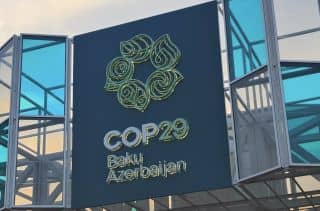
www.buildingsandcities.org/insights/commentaries/mainstreaming-research-agendas.html
Mainstreaming Research Agendas from Global South Countries

Why research funders, institutions and academics need to frame research agendas that are locally responsive
Samuel Laryea (University of the Witwatersrand) considers the contribution of researchers in developing countries to the discourse in Q1 journals. Common themes are evident in both developed and developing regions. However, publications from African countries appear to only partially address prevalent issues in the region, with limited publications that explore local contexts.
Roughly 20% of the papers in top-ranked journals originate from developing countries generally, and roughly 5% originate from African countries specifically. These papers have so far made interesting contributions but relatively little impact in influencing the direction of research agendas and trends in top journals. Researchers in developing countries are likely to generate greater impact in the mainstream literature through studies that are locally responsive from an innovation perspective and globally competitive from a theoretical perspective.
Global landscape of publications
Globally, a look at the 105,000+ papers, published between 2020 and 2024, in 50 Q1 journals (see Appendix 1) indexed by Scimago in the building and construction category shows these have been dominated by contributions from the Global North. The overall focus has been on themes relating to sustainability, technology, and urban planning. The research agendas in the past five years have been driven by 5 main global societal needs and imperatives:
- energy-efficient buildings and low-carbon materials, with a focus on promoting sustainable construction through recycled and eco-friendly materials.
- development of high-performance materials (e.g. ultra-high-performance concrete, composites) and optimising building structures for improved performance in extreme conditions.
- the digitalisation and integration of BIM, AI, and automation technologies to enhance construction efficiency, reduce manual processes, and improve accuracy in project execution.
- resilience of infrastructure to natural disasters and advancing structural health monitoring for ongoing safety and performance assessment.
- energy-saving technologies in buildings and the incorporation of renewable energy sources to reduce environmental impact.
Contributions from the Global South
Conversely, the 20% of publications in top ranked journals from developing countries have focused broadly on six main areas:
- sustainable construction: green building practices, use of sustainable materials, and energy-efficient designs to reduce environmental impact.
- infrastructure development: enhancing transportation, energy, and water infrastructure to support economic and urban growth.
- affordable housing: cost-effective construction methods, alternative materials, and strategies to address housing shortages and improve living conditions.
- disaster resilience: the capacity of buildings and infrastructure to withstand natural hazards such as earthquakes and floods.
- energy: integrating renewable energy sources and energy-efficient systems in built facilities; reduction of fossil fuel use; lowering of energy demand.
- urbanisation and planning: rapid urban growth, slum upgrading, informal settlements, and effective urban planning.
The 5% of publications in top ranked journal from African countries focus broadly on six areas:
- climate change adaptation: creating infrastructure that is resilient to extreme weather events and changing climate conditions specific to African contexts.
- sustainable urban planning: strategies for creating resilient cities with green spaces, sustainable transport, and effective urban policies.
- indigenous materials and traditional building methods: enhancing sustainability and reducing construction costs.
- healthy environments and indoor air quality.
- digitalisation and innovation in the construction sector, with a focus on local adaptations.
- energy and electrification: access to clean energy sources, particularly solar and mini-grid systems, to support both urban and rural development.
The evidence in Appendix 1 shows that developing and African countries have contributed approximately 20% and 5% of papers respectively in leading Q1 journals in the built environment field between 2020 and 2024. There may be different reasons behind this wide gap between the quantity of contributions from developed and developing countries, including availability and types of funding, and differences in institutions and research landscapes.
In summary, there are common themes across both developed and developing regions which more closely align to global societal needs and imperatives, including sustainability, energy and digitalisation which are. However, publications from African countries appear to only partially address prevalent issues in the region, with limited publications exploring local contexts of poor economic environment, funding for infrastructure, technological capacity, conflict and security, politics and corruption.
Transforming research in developing countries into mainstream research agendas
Three main points arise from Appendix 1:
- There is a low number (percentage) of published outputs from Africa in Q1 journals. This reflects a relatively low contribution in leading journals from a quality perspective.
- There is a significant overlap between the research themes in publications from Africa and the developed world. Yet, this does not fully reflect the development characteristics and imperatives in developing countries as defined by the World Bank, indicating that it perhaps partly reflects the view of some researchers in developing countries on the need to align their research with the prevailing research agendas in developed countries and leading journals to enhance the chances of acceptance. It is also possible that the publications from African countries in Q1 journals could be relatively lower if much of this research didn't "fit" well into the international agenda, i.e. research focused on local issues may not be mainstream enough for some Q1 journals.
- The impact (in terms of citations) of papers from developing countries (Africa, in particular) has been relatively low, although it is acknowledged there are other ways to evaluate quality and impact.
The significant overlap between the research themes in publications from developed and developing countries shows a considerable influence of global research agendas, which raises a vital point about local and regional research issues. Research should be locally responsive to the unique contexts of its environment, and globally competitive on a theoretical level, as Professor Adam Habib explains;
"Being world-class requires not the imitation of the foreign, but the conquering of the local, and the theorisation of this to the global. It is the responsiveness to one's contextual specificities that enhances the ability of researchers in developing countries to make unique contributions to the global corpus of knowledge and become globally competitive".
In their bid to align with the global discourse in key journals, some researchers in developing countries simply imitate some of the global research agendas and use this as a basis to propose solutions to local problems. Examples of this can be seen in the areas of sustainability strategies; performance improvement of construction materials; and climate change adaptation approaches. However,
Looking forward, merely outputting more papers will not necessarily generate a greater impact in the mainstream literature. The significant scale of infrastructure provision required to accelerate development in developing countries, and the relatively poor economic environment defined by the World Bank, suggests the need for research funders, institutions and academics to frame research agendas that are locally responsive from an innovation perspective and globally competitive from a theoretical perspective. Such studies are likely to generate more impact and following of international counterparts from developed countries seeking new insights and theories compared to those that merely imitate the research agendas in developed countries without responsiveness to local considerations. The publications from African countries on indigenous materials and traditional building methods, and local adaptations of digitalisation and innovation in the construction sector are positive signs that some shift is occurring which bodes well for elevating the impact of research from developing countries.
Appendix
Q1 Journals in Building & Construction subject category (Scimago) (2020 - 2024)
|
SN |
Journal name |
Papers 2024 |
Papers 2023 |
Papers 2022 | Papers 2021 | Papers 2020 |
TOTAL (2020-2024) |
|
01 |
Applied Energy |
2120 |
1569 |
1823 |
1262 |
1733 |
8507 |
|
02 |
Automation in Construction |
535 |
428 |
550 |
462 |
364 |
2339 |
|
03 |
Building and Environment |
873 |
1030 |
1130 |
832 |
754 |
4619 |
|
04 |
Building Research and Information |
42 |
82 |
56 |
52 |
60 |
292 |
|
05 |
Building Simulation |
93 |
143 |
135 |
123 |
97 |
591 |
|
06 |
Buildings and Cities |
23 |
57 |
63 |
53 |
42 |
238 |
|
07 |
Cement and Concrete Composites |
374 |
398 |
445 |
356 |
323 |
1896 |
|
08 |
Cement and Concrete Research |
245 |
231 |
304 |
258 |
244 |
1282 |
|
09 |
Construction and Building Materials |
3139 |
4133 |
3607 |
4042 |
3576 |
18497 |
|
10 |
Construction Innovation |
78 |
144 |
75 |
50 |
31 |
378 |
|
11 |
Construction Management and Economics |
46 |
64 |
60 |
58 |
75 |
303 |
|
12 |
Developments in the Built Environment |
102 |
189 |
40 |
26 |
31 |
388 |
|
13 |
Energy |
2411 |
4008 |
3354 |
2463 |
2316 |
14552 |
|
14 |
Energy and Buildings |
677 |
953 |
848 |
822 |
706 |
4006 |
|
15 |
Energy and Built Environment |
57 |
95 |
41 |
40 |
40 |
273 |
|
16 |
Engineering, Construction and Architectural Management |
203 |
464 |
221 |
99 |
196 |
1183 |
|
17 |
Georisk |
59 |
67 |
49 |
23 |
20 |
218 |
|
18 |
Indoor Air |
42 |
41 |
242 |
180 |
103 |
608 |
|
19 |
International Journal of Construction Management |
221 |
327 |
274 |
93 |
76 |
991 |
|
20 |
International Journal of Refrigeration |
245 |
379 |
299 |
397 |
374 |
1694 |
|
21 |
Journal of Building Engineering |
1143 |
2694 |
1949 |
1634 |
775 |
8195 |
|
22 |
Journal of Building Performance Simulation |
43 |
58 |
48 |
41 |
52 |
242 |
|
23 |
Journal of Composites for Construction |
76 |
89 |
100 |
80 |
106 |
451 |
|
24 |
Journal of Construction Engineering and Management |
172 |
218 |
200 |
250 |
214 |
1054 |
|
25 |
Journal of Earthquake Engineering |
118 |
250 |
358 |
121 |
101 |
948 |
|
26 |
Journal of Information Technology in Construction |
42 |
38 |
53 |
56 |
31 |
220 |
|
27 |
Materials and Structures |
212 |
181 |
239 |
228 |
146 |
1006 |
|
28 |
Smart and Sustainable Built Environment |
98 |
117 |
75 |
31 |
50 |
371 |
|
28 |
Structural Control and Health Monitoring |
108 |
143 |
278 |
184 |
167 |
880 |
|
30 |
Structural safety |
69 |
66 |
61 |
81 |
72 |
349 |
|
31 |
Structure and Infrastructure Engineering |
132 |
225 |
138 |
106 |
128 |
729 |
|
32 |
Structures |
998 |
1987 |
1248 |
1192 |
686 |
6111 |
|
33 |
Sustainable and resilient infrastructure |
59 |
69 |
55 |
22 |
29 |
234 |
|
34 |
Thin-Walled Structures |
876 |
1009 |
788 |
761 |
591 |
4025 |
|
35 |
Tunnelling and Underground Space Technology |
423 |
575 |
450 |
452 |
377 |
2277 |
|
36 |
Sustainable Structures |
8 |
12 |
10 |
10 |
0 |
40 |
|
37 |
Underground Space (China) |
86 |
101 |
74 |
62 |
27 |
350 |
|
38 |
Journal of Road Engineering |
21 |
25 |
20 |
4 |
0 |
70 |
|
39 |
Journal of Structural Engineering |
209 |
252 |
308 |
340 |
383 |
1492 |
|
40 |
RILEM Technical Letters |
10 |
14 |
20 |
20 |
20 |
84 |
|
41 |
Journal of Constructional Steel Research |
432 |
486 |
540 |
514 |
502 |
2474 |
|
42 |
Journal of Bridge Engineering |
107 |
149 |
165 |
152 |
141 |
714 |
|
43 |
Bulletin of Earthquake Engineering |
197 |
250 |
280 |
238 |
243 |
1208 |
|
44 |
Journal of Materials in Civil Engineering |
542 |
640 |
507 |
523 |
506 |
2718 |
|
45 |
Structural Concrete |
338 |
480 |
253 |
326 |
200 |
1597 |
|
46 |
Civil Engineering Journal |
194 |
219 |
192 |
166 |
193 |
964 |
|
47 |
ACI Materials Journal |
33 |
41 |
120 |
114 |
117 |
425 |
|
48 |
Advances in Structural Engineering |
177 |
189 |
220 |
262 |
253 |
1101 |
|
49 |
International Journal of Structural Stability and Dynamics |
267 |
424 |
242 |
214 |
224 |
1371 |
|
50 |
Steel and Composite Structures |
119 |
159 |
184 |
220 |
213 |
895 |
|
|
TOTAL (Q1 journals) |
18894 |
25962 |
22791 |
20095 |
17708 |
105450 |
Notes
1. The data in this Table is limited to Q1 journals in the Building and Construction subject category (Scimago).
2. Developing countries are defined here as the World Bank Country and Lending Groups low-income (26 countries), lower-middle income (51 countries), and upper-middle income (54 countries) countries i.e.. 131 developing countries in total, forming 67% of the total number of countries in the World (195 countries).
3. 2024 publications count is up to publications as of 12 September 2024.
4. In terms of the methodology used to estimate the contribution from developing and African countries, a manual count was one in 15% of the journals and then this was used to generate an estimate of 20% and 5% respectively.
5. The journals with zero (0) in the year 2020 were first published in 2021, hence the reason for no publication records in the year 2020.
Latest Peer-Reviewed Journal Content
Youth engagement in urban living labs: tools, methods and pedagogies
N Charalambous, C Panayi, C Mady, T Augustinčić & D Berc
Co-creating urban transformation: a stakeholder analysis for Germany’s heat transition
P Heger, C Bieber, M Hendawy & A Shooshtari
Placemaking living lab: creating resilient social and spatial infrastructures
M Dodd, N Madabhushi & R Lees
Church pipe organs: historical tuning records as indoor environmental evidence
B Bingley, A Knight & Y Xing
A framework for 1.5°C-aligned GHG budgets in architecture
G Betti, I Spaar, D Bachmann, A Jerosch-Herold, E Kühner, R Yang, K Avhad & S Sinning
Net zero retrofit of the building stock [editorial]
D Godoy-Shimizu & P Steadman
Co-learning in living labs: nurturing civic agency and resilience
A Belfield
The importance of multi-roles and code-switching in living labs
H Noller & A Tarik
Researchers’ shifting roles in living labs for knowledge co-production
C-C Dobre & G Faldi
Increasing civic resilience in urban living labs: city authorities’ roles
E Alatalo, M Laine & M Kyrönviita
Co-curation as civic practice in community engagement
Z Li, M Sunikka-Blank, R Purohit & F Samuel
Preserving buildings: emission reductions from circular economy strategies in Austria
N Alaux, V Kulmer, J Vogel & A Passer
Urban living labs: relationality between institutions and local circularity
P Palo, M Adelfio, J Lundin & E Brandão
Living labs: epistemic modelling, temporariness and land value
J Clossick, T Khonsari & U Steven
Co-creating interventions to prevent mosquito-borne disease transmission in hospitals
O Sloan Wood, E Lupenza, D M Agnello, J B Knudsen, M Msellem, K L Schiøler & F Saleh
Circularity at the neighbourhood scale: co-creative living lab lessons
J Honsa, A Versele, T Van de Kerckhove & C Piccardo
Positive energy districts and energy communities: how living labs create value
E Malakhatka, O Shafqat, A Sandoff & L Thuvander
Built environment governance and professionalism: the end of laissez-faire (again)
S Foxell
Co-creating justice in housing energy transitions through energy living labs
D Ricci, C Leiwakabessy, S van Wieringen, P de Koning & T Konstantinou
HVAC characterisation of existing Canadian buildings for decarbonisation retrofit identification
J Adebisi & J J McArthur
Simulation and the building performance gap [editorial]
M Donn
Developing criteria for effective building-sector commitments in nationally determined contributions
P Graham, K McFarlane & M Taheri
Join Our Community

The most important part of any journal is our people – readers, authors, reviewers, editorial board members and editors. You are cordially invited to join our community by joining our mailing list. We send out occasional emails about the journal – calls for papers, special issues, events and more.
We will not share your email with third parties. Read more



Latest Commentaries
COP30 Report
Matti Kuittinen (Aalto University) reflects on his experience of attending the 2025 UN Conference of the Parties in Belém, Brazil. The roadmaps and commitments failed to deliver the objectives of the 2025 Paris Agreement. However, 2 countries - Japan and Senegal - announced they are creating roadmaps to decarbonise their buildings. An international group of government ministers put housing on the agenda - specifying the need for reduced carbon and energy use along with affordability, quality and climate resilience.
Building-Related Research: New Context, New Challenges
Raymond J. Cole (University of British Columbia) reflects on the key challenges raised in the 34 commissioned essays for Buildings & Cities 5th anniversary. Not only are key research issues identified, but the consequences of changing contexts for conducting research and tailoring its influence on society are highlighted as key areas of action.